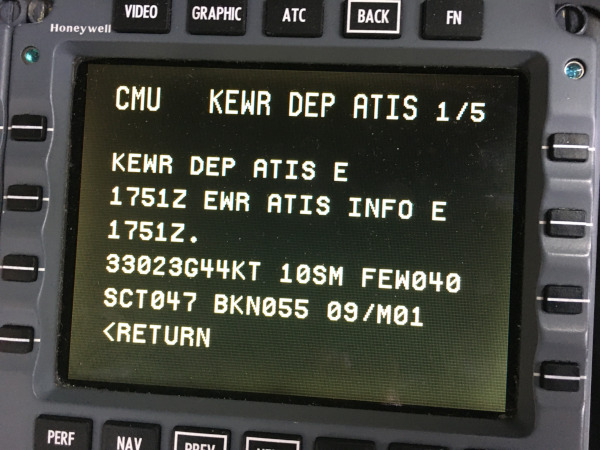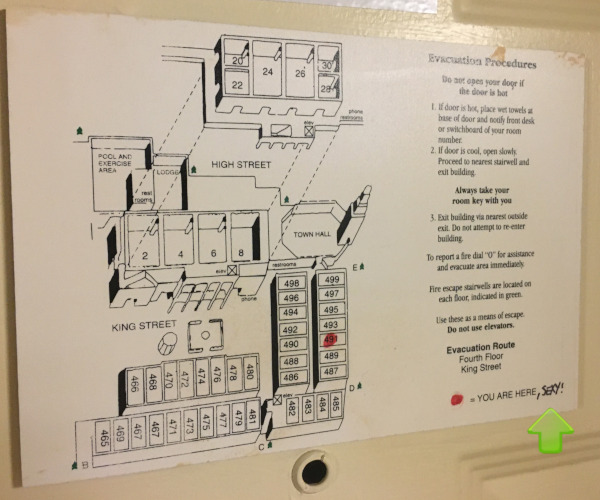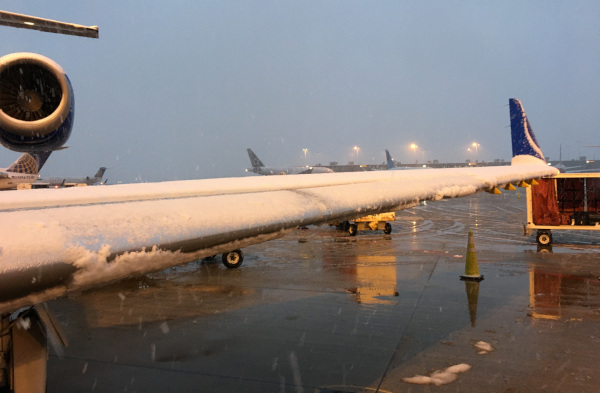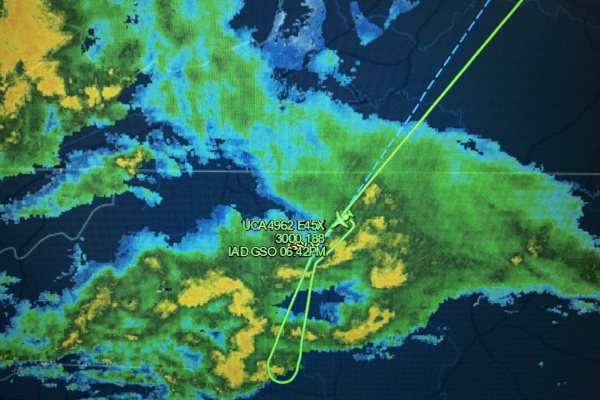My Journey To The Airlines
Part 3 - Proficiency Check

Sunrise Climbing Into The Flight Levels
This is the third in a series of articles I've written about my journey to the airlines. While not strictly necessary, reading parts one and two first is recommended. When I finished part two I had about 400 hours and 8 months on the line and I was waiting for my annual proficiency check. As I write this I have about 600 hours and am expecting to upgrade to captain in another 400 hours or roughly 5 months.
Proficiency Check
Every year pilots flying under Part 121 are required to attend annual recurrent training and complete what is known as a "proficiency check" or "PC" for short. As with all checkrides this is what pilots call a "jeopardy event", meaning, if you fail, you lose the right to fly the airplane and get a black mark on your training record that follows you for your entire career.
As I completed my initial type rating checkride in January of 2019 I fully expected to be scheduled for recurrent in January 2020 but they instead scheduled me a month early. Recurrent training amounted to a limitations quiz, three days of classroom review and a closed book written test. The instructor was required to review all of the same powerpoint presentations we were first exposed to in initial training, but of course we only had three days to cover everything. Obviously this schedule precluded dwelling very long on any given subject but as our instructor spent considerable time at ExpressJet (the launch customer for the Embraer 145) and was quite experienced he knew what he needed to teach us to do well on the written exam without "teaching the test" as some instructors in this industry do.
The proficiency check was similar in concept but slightly different in execution from my initial type rating checkride. It began with another oral exam with a lot of emphasis on preflight decision making (weather, alternates, etc.) and systems followed by a 4 hour simulator session. Because neither our initial nor recurrent training was, at this time, approved under the FAA's Airline Qualification Program (AQP), the jeopardy event occurred only when we were pilot flying (PF). If that made you think "okay, so when I'm pilot monitoring (PM) I can't fail", think twice, as a crappy copilot can sink your ride. Naturally, therefore, it's common to give all due effort as PM to help your crew partner succeed. I was lucky in that my crew partner was a line check airman (LCA) and quite experienced. That's not to say he didn't forget a few callouts (no one, regardless of experience, is perfect) but I covered his butt like he covered mine.
I was held to the same standards as my initial checkride but because I'd been flying the airplane for so long at this point I found a majority of the checkride a lot easier than the first time through. The downside is that I had not performed any go-arounds (as pilot flying, that is) or single engine work since my initial checkride, as the LOFT performed at the 6 month mark is designed to be nothing more than a couple of flight segments flown exactly as we would fly them on the line (hence "LINE oriented flight training"). During the pre-brief I took issue with this and asked why we don't focus the six month checks on things we don't do on a regular basis. He said this is simply the way the program is designed and "if it helps", he said, "everyone comes in here with the same concerns".
The good news is I remembered all my callouts and techniques and the single engine work went off without a hitch. The interesting piece of feedback I received was that while the examiner appreciated the fact that I could easily and smoothly hand-fly all of my single engine work, much as I did during the initial type rating checkride, he suggested that doing so places additional burdens on the pilot monitoring so I should probably use the autopilot more often. After all, that's its function -- to reduce crew workload. Point taken.
Passing recurrent gave me a renewed sense of technical proficiency with the aircraft and helped confirm that passing my initial checkride wasn't a fluke, while failing the checkride at my former company most certainly was.
Bidding
One of the most important things in a pilot's life is their schedule. This changes on a monthly basis and occasionally more frequently based on weather or other factors. My company uses what is called Preferential Bidding System (PBS) software to generate our monthly schedules. The specific software in use by my company is called NavBlue, which was previously known as NavTech.
PBS allows us to set criteria or constraints that the software ultimately uses to iterate over the entire pairing (or trip) list to create the "set" of pairings matching one's preferences. While it is possible to create preferences to select specific pairings, much as is done manually with line bidding, there is really no point in doing so as it is not possible with current software implementations to know, in real time, or prior to the close of the bid period, what bidding "power" one can muster during the bid to be awarded any given trip. This is of course the same problem with line bidding, which is what contributes to its inefficiency. So most people who bid with PBS just create a bid with generalized preferences and take whatever comes their way. Except in extreme cases or a blatant error in one's bid preferences, PBS gives us the very same thing as line bidding does, without the hours wasted in reviewing each and every pairing and attempting to select pairings that will not be gobbled up by pilots with higher seniority.
The first four months on the line I was on reserve. During this time I created both a reserve bid as well as a simple "pairings" bid. The reserve bid is utilized when the system cannot provide enough hours to satisfy the number of hours specified in the applicable credit window, while the "pairings" bid is used when the opposite is true, i.e. you have high enough seniority to be awarded a sufficient number of trips to meet the credit window constraints. The need for a pairings bid should be obvious at this point -- lacking that, the system will never provide a line or fixed schedule. Failing to include a pairings bid positioned ABOVE the reserve bid is a rookie mistake, and something I did the first month of bidding. Fortunately for me I lacked the seniority to hold a line at that point so there were no true consequences to my mistake.
A credit window, if you're wondering, is the acceptable range of hours required to satisfy a request for a line in a given bid period (i.e. each month). Most companies utilize three credit windows -- minimum, normal, and maximum. The rule is if you don't specifically request a particular credit window you get the "normal" credit window, which is a middle-of-the-road range of credit hours. Each company can modify the minimum and maximum values of each credit window to satisfy company requirements. In my company we overhired FOs after I was hired, and that led to a lot of FOs on reserve and failing to consolidate. As resources in the scheduling department are finite and dealing with reserves consumes far more resources than line holders do, the company lowered the minimum bound of the minimum credit window substantially to as low as 60 hours a month at one point, and then told FOs to set a condition in their bid to select minimum credit so that as many FOs as possible would be awarded a line.
Since the only thing I had any control over in the reserve bid was days off I typically selected Thursdays and Fridays off mostly because I wanted to be able to use those days to accomplish errands I would not have been able to do on the weekend and Sunday in particular due to business closures. As it turned out this was a great bidding strategy as well because high seniority people typically wanted weekends off, freeing lots of good trips with good overnights.
My seniority rose steadily every month due to upgrades but this accelerated more recently as we upgraded larger numbers of FOs. At the time I'm writing this I'm now roughly 35% seniority in base, which means 65% of the FOs in base are below me. This seniority has allowed me to become more creative and specific in my bid. I can now request flying with specific captains, which by their very nature are typically higher in seniority unless they are a Direct Entry Captain or DEC, and thus are able to hold better trips. I can also avoid various airports I don't like (looking at you, PQI and ORD) without reducing the number of eligible pairings below a safe level. And finally, I can ask for specific overnights I like (BTV, PWM, CHO, and all southern outstations in the winter months) and have some hope of getting them.
Below is a copy of a modified bid I used for March 2020.
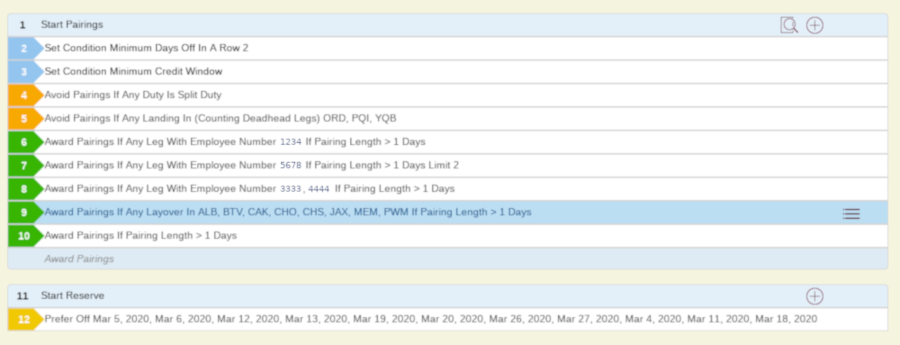
The format of the bid is application specific. In this case, NavBlue requires preferences in the following order:
-
Conditions - Global variables, if you will, that set overriding characteristics in the bid
-
Time Off - Any days you want off, which can be selected in a number of ways (specific days off, patterns, etc.) This is, incidentally, a special kind of "avoid" preference, as it removes trips from the bid that intersect with any of the specified days off.
-
Avoids - Preferences that negate something in the bid. Everything from employees to overnights can be eliminated from the bid here.
-
Awards - Preferences that request something in the bid. Again, everything from employees to overnights can be selected here.
Note that "avoids" and "days off" reduces the overall set of pairings applicable to your bid. For this reason it's best to query the pairings list with these preferences ahead of time to determine how many pairings will be eliminated. If the remaining set of pairings is too small the system may override the preferences and randomly assign trips to satisfy contractual obligations (i.e. the minimum guarantee). Contrary to popular belief, this will not necessarily drop the entire pairings bid and force you back on reserve. The software is designed to give you a line if your seniority would otherwise allow you to hold one but you may not like the results of a bid assigned in this manner.
In the example bid I have requested a minimum of two days off between trips, mostly so the system does not assign me back to back trips and I have time to decompress before the start of the next trip. I also do this to ensure that even if IROPs during the trip cause me to be extended into a day off I still have at least one day to get home and repack for the next trip. In other words, asking for two days off more or less guarantees I'll be off at least one day between trips. I don't ask for more than two days, as I actually prefer large groups of days off, and asking for 3 or more days off between trips reduces the likelihood that I'll get those large blocks of days off simply because there are only so many days in a month and I am required to do a certain amount of flying every month.
The next two lines, colored orange, show some avoid pairings preferences. In this case I requested that I not be assigned split duties, which are essentially night duty similar in concept to a cargo schedule, where you fly the last flight out from the hub to an outstation, wait there for a few hours, either at the airport or a hotel (depending on the total time of the delay between arrival and departure flights), and then fly the first flight home in the morning back to base. Like cargo schedules, split duties are hard on the body and this the reason I avoid them. The next line indicates airports I wish to avoid. My original bid avoided only PQI, but this was the first bid that I added other evil airports including ORD (Chicago) for reasons of traffic density and YQB (Quebec, CA) simply because they don't support customs pre-check and thus we have to take additional time to go through customs back in the US when we arrive at the hub. I'm not paid for this extra effort so it's not worth it to me.
The final four lines, colored green, show preferences indicating things I want to be awarded. The interesting thing about these lines is that they are interpreted by the PBS software such that if the bid can be satisfied by the preferences specified in the first line the subsequent lines will never be interpreted. Common to each preference line is a request for trips of a length greater than one day as required to reduce commuting expenses. This is in effect a logical AND operation, meaning only those trips meeting both preferences on a given line will be selected.
When I first started bidding to fly with specific captains I put the maximum of five employee IDs in a list on a single preference line. Since a couple of the captains I requested are quite popular the system returned an error message in prior bids indicating "denied by seniority" or another message indicating that the trips assigned to the particular captain conflicted with my preferences -- for example, the captain bid for or received a pairing with a landing in PQI, and I specifically avoid such pairings. The problem is the system just provided a list of the error messages affecting the entire preference line rather than associating each error message with an employee ID so I could not tell exactly why a request to fly with a particular captain was denied.
My solution was to separate the requests into multiple lines. This also allowed me to use the limit preference to restrict the number of pairings in the month assigned to a particular captain. I used that on line 7 in this case because I was awarded 3 out of 4 trips in the prior month with that captain and I wanted to give him the professional courtesy of a break from me (though he told me I could continue to bid with him). It also established logic necessary to ensure that if line 6 was not honored (and it hadn't been for five months) then I'd get two trips with the captain specified in line 7 and the remainder of trips would be assigned from the two captains in line 8. Then, if the system was still unable to fulfill my request it would drop down to line 9 and start assigning pairings based on layover.
You may note that there is another line below the bid in gray italics that says "Award Pairings". This reflects the software logic to require an award of pairings even if the user fails to include any "Award" preferences or the preferences fail to provide sufficient trips (hours, really) to complete the bid request. Note that if this line is executed, trips will be awarded randomly from the list of available pairings so you may get something you don't want.
The one major downside to the NavBlue PBS, and most PBS software, I imagine, is that the bidding process is not real-time, meaning there is no way to enter preferences and have your trips assigned in real time as a trial before the bid window closes and the "final" bid process runs. For this reason I was quite conservative with my bid preferences until I really knew how the system worked and even then I fully acknowledged the risk that the preference(s) selected might affect the bid in an undesired manner. Due to inadequate software documentation I had to ask someone in the union scheduling committee for information on how specific preferences had to be organized and how the software would interpret them, particularly in situations where the preference could not be satisfied.
Packing Food
For the first ten months on the line I had a small lunch bag that I used to store and chill commercially prepared food like a sub or sandwich. Although during this time I managed to steer clear of fast-food joints I grew tired of paying through the nose for food of barely adequate quality so I decided to buy a new, larger insulated cooler bag -- specifically the StrongBags Canadian Ice Cooler ($99)-- and start bringing home-cooked meals with me. I've taken it on three trips so far and it has already paid for itself.
I won't do a full review of the bag here, but I will say that it is well constructed and provides adequate space for me to store two full meals including an entree and some veggies plus some breakfast foods (protein bars or oatmeal). This is perfectly adequate for a three day trip (two overnights) because I don't typically eat on go-home day. In the event I need more food for a longer trip I revert to buying food. Having done a few four day trips recently I was forced to buy a single meal per trip for around $15 all in, and that is a steal.
I also found some great food storage containers. The Rubbermaid Brilliance line are made in the US, very well constructed, have a positive locking mechanism that will never release even if my cooler gets bounced around. The lids feature a quality seal that appears to be made from a form of silicone or high quality rubber. These units are are best purchased in five packs as the individual pricing is unacceptably high. I selected the 1.3 cup units ($20/5) for veggies or other sides and the 3.2 cup versions ($29/5) for my entrees. I've only used them a few times, but so far, so good.
Hotels
As I've stayed in many hotels over the last year I've developed strong opinions on what makes a hotel good or bad. I could probably write an entire article about this subject but I'll keep it short.
Most hotels have clearly forgotten their core mission. For the record, the purpose of a hotel is to serve the traveling public with a home away from home. And given that, I have to ask you -- when was the last time you rented or owned a home without a refrigerator and microwave? I'll answer that for you -- the correct answer is never. Yet for some reason the trend has been for hotels to remove these essential amenities from the rooms. Flight crews are occasionally afforded access to microwaves in our rooms if we request them but an increasing number of hotels (like Aloft) don't offer that option and force us to go all the way down to the lobby to use a communal microwave to heat our food when we arrive at midnight. To say this is inconsiderate and inconvenient is the understatement of the century.
A captain and I were recently discussing this very subject and he came up with the same solution I had some time ago -- if hotels insist on removing amenities from the rooms a special room on each floor should be designed into the hotel or an existing guest room near the noisy elevators should be converted to provide the following:
-
Two sets of washers and dryers free for use by guests. These should be high quality horizontal axis commercial units that are generally well balanced, insulated, and hence quiet.
-
Cable TV
-
A table and chairs so you can work on a laptop or have a meal while you wait for your clothes
-
Full size refrigerator / freezer
-
1000 Watt microwave so our food heats in a few minutes rather than a few centuries
-
Ice machine
-
Vending machines providing a variety of healthy drinks (i.e. not just HFCS garbage like Coke / Pepsi) and snacks
But monkeys will probably fly out of my ass before common sense prevails and hotels implement this everywhere because all these things cost money and reduce profit vs the nickel-and-dime approach most business "leaders" implement these days (see also: airline bag policies).
A disturbing and annoying design trend I have seen in hotels lately is the use of vertical blinds on the windows. These move up and down vs. the typical horizontal blind that moves left and right. The problem is I like to look out the window on occasion while maintaining privacy, but when I have a room equipped with vertical blinds my choice is pull the blinds up to eye level and let so much light in I go blind or fully close them and feel like I'm living in a cave. Hotel designers that implement vertical blinds suffer from a severe case of cranial-rectal inversion. Just stop it. All hotels need horizontal blinds that I can crack just at eye level to see the world without giving my neighbors a show when I walk around in my underwear.
The second annoying design trend has to do with captive TVs, attached to what is essentially a computer that streams channels sampled from a common Cable or satellite TV source. These systems are deathly slow, sometimes taking up to 10 seconds to select a new channel, and usually require replacement of the stock TV remote with some kind of generic remote that eliminates the input source selection that I need to use my Roku, which I bring with me precisely to avoid these stupidly designed systems. Some of these systems do provide access to common streaming services including Netflix and Hulu but I refuse to enter my streaming credentials on a foreign computer as I have no way of knowing whether there is a keylogger installed on the system.
The best hotel at which I've stayed is a Hampton Inn. We don't stay in these often because they are rarely the cheapest option but they are typically great in that they provide all essential amenities, including free clothes washers / dryers on alternate floors. This is the only chain that has consistently maintained my room properly, not had me chasing them down for toilet paper or towels, and not attempted to nickel and dime me for everything.
A good backup to the Hampton Inn is the Doubletree chain, which like the Hampton Inn is also a Hilton property. You should probably see a trend here forming. I have only stayed at one bad Doubletree (STL) that insisted they swipe our personal credit card for an amenities fee before they would give us our room keys, at 2AM no less, having just left our original hotel due to inconsiderate and incompetent staff. Sorry, but the cookies don't always make up for staff and policies this stupid.
The worst hotel I stay at regularly is the Aloft, mostly for the reasons I have described above. While the rooms are generally clean, I don't like the layout of the rooms or the fact that they don't have microwaves in the rooms, won't provide one for flight crews, and force us to walk all the way down to the lobby in our PJs to heat our food and carry scalding hot water upstairs for tea (I refuse to use coffee makers in the room provided for this purpose as they are never properly cleaned).
The worst hotel I've ever stayed at was an IBIS Suites in LGA. One roll of toilet paper and no backup. One set of towels. Non-wet rated tile everywhere including the bathroom, which when combined with a lack of grab bars in the shower made bathing outright dangerous (think: walking on ice). An iron which barfed black crap into my only hand towel (fortunately I test every iron before using it on my clothes), and a replacement that showed up 30 minutes after I requested it, delaying my efforts to go to bed on time, only to realize that the cord was cut in several places and bare 110VAC wiring was exposed. This place is a lawsuit waiting to happen. Thankfully we no longer go to LGA.
My company typically puts us in Holiday Inns. These vary in quality across our route structure. A few are very nice (BTV), most are acceptable, but the shithole in STL is not, as it had a history of bed bugs. In fact I sent email to our travel department to move our crews out of that hotel after we arrived at 1AM only to be greeted by incompetent and inconsiderate staff. Fortunately the message appears to have been received, as I heard our flight crews are no longer being scheduled to stay there -- so let this be a lesson to all hotels who think they can screw their guests, and especially flight crews -- we will take our business elsewhere.
Winter Operations
The winter season arrived unusually early this year and that turned out to be both a blessing and a curse. I've gained a lot of experience operating in winter weather so far and we're not quite done with the 2019-2020 season yet. I have flown countless flights involving various forms of icing, both in-flight and on the ground and have had to deal with snow covered aircraft on several occasions.
The blessing, of course, is that this experience is considered essential to upgrade (becoming a captain). Given that I have about 600 hours in the airplane at this writing I need 400 to upgrade, and considering I'm flying about 75 hours a month that means if everything goes as planned I will be upgrading sometime in the summer of 2020. That in turn means next winter I'll be on the hook for making all of the critical decisions regarding deicing. The curse is that this is winter, and winter always means generally worse weather, higher than average winds, and rushed preflights.
We use heated Type 1 fluid for deicing (i.e. removing ice from the aircraft) and then a coat of Type 4 to protect us from accumulating precipitation, but Type 4 is only used when actual precipitation is occurring. This includes something as simple as flurries. The other day we were getting only a few flakes while at the gate, they pushed us back off the gate a few feet to apply Type 1, and the captain made the call to do Type 4 as well. That turned out to be a good thing since as we were taxiing out the snowfall intensity increased briefly and that would have otherwise forced us to return for another deicing procedure.
Medical Emergency
In December of 2019 I experienced my first medical emergency and my first declared emergency in over thirty years of flying. I was pilot flying (PF) from IAD to JAX when somewhere just north of GSO the Flight Attendant (FA) called and said an older gentleman was having trouble breathing, she had found an Emergency Medical Technician (EMT) among the passengers and enlisted his help to apply supplemental oxygen.
Even before the captain confirmed with the FA that we needed to land at the nearest suitable airport I glanced down at my MFD to find GSO right on the nose of the aircraft. GSO was in my company's route structure and I had flown there along with this captain on a prior trip, so I knew at that point we could use it as a diversion airport provided the weather was acceptable. After a very bumpy descent the weather around GSO turned out to be 400 and 2, which later dropped to 400-1 in moderate rain. I wound up conducting a normal descent, though with an elevated vertical speed, flew the ILS23L to near minimums in fog and rain, and then set the aircraft down extremely softly, to make up for the fact that we were required to land slightly above maximum landing weight despite burning off as much fuel as possible during the descent -- the goal being to avoid grounding the aircraft for a hard-landing inspection.
The ambulances met us at the gate, the passenger with the medical issue was removed from the aircraft and we then deplaned while we waited for contract maintenance to address some maintenance issues concerning our medical equipment. Around this time it became clear to me that the FA was having a bit of a hard time dealing with the emotional impact of the experience. I've long known that the one thing good conversationalists and therapists have in common is that they listen more than they talk so I sat with the FA and listened to her account of what happened. I then told her that I was very proud of her and how she handled a very difficult situation. That pepped her up a bit and slowly but surely she regained her composure. By the time our departure time rolled around she was back to her old jovial self and fit for duty, so we departed around 11:15PM and finally arrived at JAX around 12:30 AM. Although this was our go-home day and we were supposed to fly back to base after this flight the company delayed our departure until the following day. I got to overnight in JAX and fly home the next day at 150% pay -- a small bonus for a job well done.
The most amazing details of this story, including some important lessons learned, I can't discuss online due to privacy issues but I will say that it was the very first time I felt like a captain and not just an FO. I made quick decisions that affected the safety of the flight and the passenger in distress, I supported and protected my team by helping my FA process what happened, and I even wound up going up to the terminal to discuss our current situation with the passengers. Amazingly, I found all of the passengers quite polite and accommodating despite the fact that none of them wanted to be in GSO at that moment. One woman standing in the crowd said "You guys are rock stars!" Naturally, I quickly dispelled that comment by smiling and saying "If we were rock stars we we'd be so rich we wouldn't have to fly for a living...but seriously, what you witnessed was just a well trained crew doing their jobs. Nothing more".
Next Up
The next challenge is upgrade. Like any other checkride it is possible to fail upgrade. Our company has its share of upgrade failures mostly because we upgrade our people at 1000 hours and that's not enough time for everyone to develop the skills and attitudes required of a captain. Fortunately I developed a plan long ago to groom myself for the left seat. Based on feedback from captains I fly with I'm ready for the left seat now, but I'll be enjoying my remaining 400 care-free hours as an FO.




